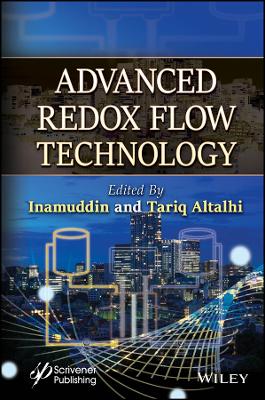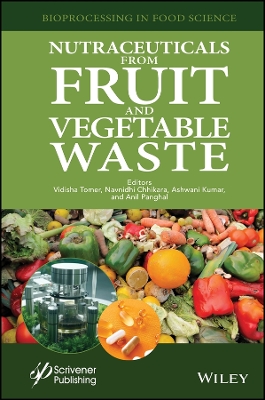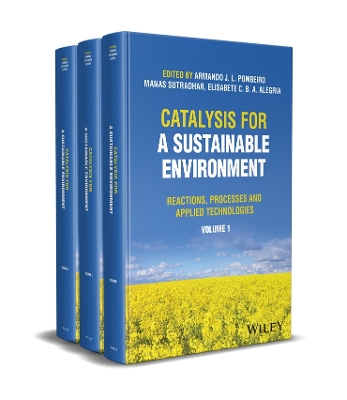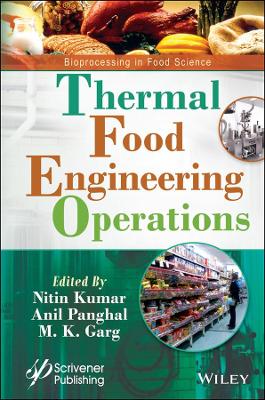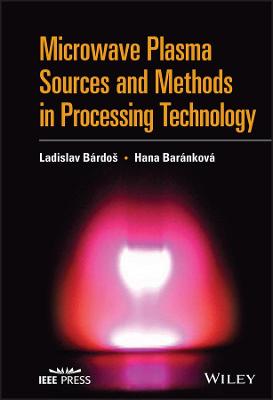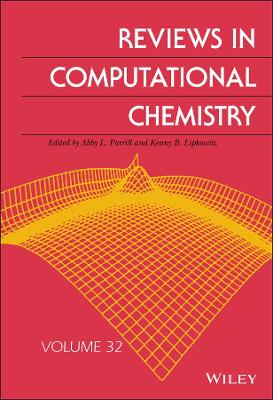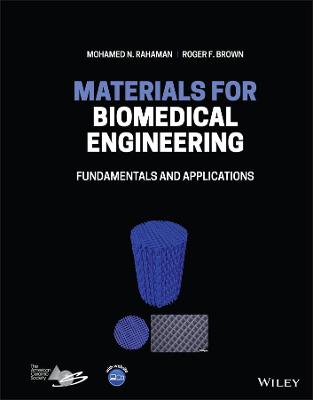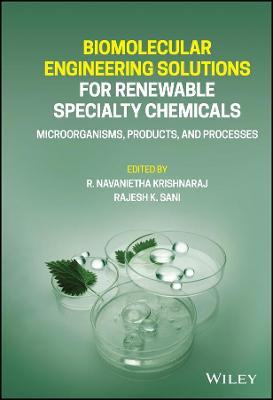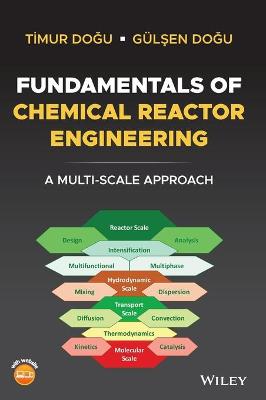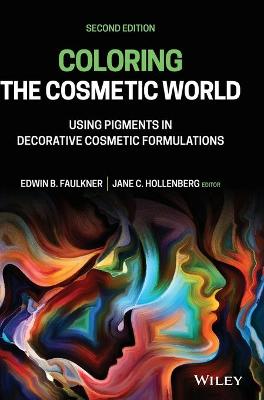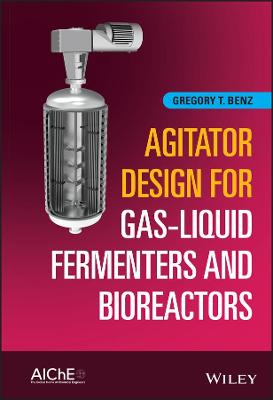Laser Technology
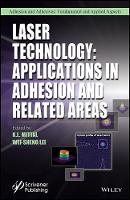 -15%
portes grátis
-15%
portes grátis
Laser Technology
Applications in Adhesion and Related Areas
Mittal, K. L.; Lei, Wei-Sheng
John Wiley & Sons Inc
04/2019
448
Dura
Inglês
9781119184935
15 a 20 dias
788
Part 1: Laser Surface Modification and Adhesion Enhancement 1
1 Topographical Modification of Polymers and Metals by Laser Ablation to Create Superhydrophobic Surfaces 3
Frank L. Palmieri and Christopher J. Wohl
1.1 Introduction 3
1.2 Wetting Theory 6
1.3 Laser Ablation Background 12
1.3.1 Ablation Mechanics 12
1.3.2 Ablation in Metals 13
1.3.3 Ablation in Polymers 16
1.4 Preparation of Superhydrophobic Surfaces by Laser Ablation 18
1.4.1 Hydrophobic Organic Substrates 18
1.4.2 Hydrophilic Organic Substrates 26
1.4.3 Hydrophilic Substrates with Hydrophobic Coatings 32
1.4.4 Hydrophilic Inorganic Substrates 43
1.4.4.1 Metallic substrates 44
1.4.4.2 Silicon substrates 51
1.4.4.3 Ceramic Substrates 55
1.5 Summary 56
References 57
2 Nonablative Laser Surface Modification 69
Andy Hooper
2.1 Introduction 69
2.2 Part 1 - Nonablative Laser Skin Photorejuvenation 70
2.2.1 Introduction 70
2.2.2 Nonablative Laser-Based Skin Treatments 72
2.2.3 Review of Nonablative Laser-Based Skin Treatments Based on Laser Type 73
2.2.3.1 Lasers Emitting at 532 nm 73
2.2.3.2 Lasers Emitting at 511, 578, 585, and 600 nm Wavelengths 75
2.2.3.3 Lasers Emitting at 780 nm 76
2.2.3.4 Lasers Emitting at 980 nm 76
2.2.3.5 Lasers Emitting at 1064 nm 76
2.2.3.6 Lasers Emitting at 1320 nm 77
2.2.3.7 Lasers Emitting at 1450 nm 78
2.2.3.8 Lasers Emitting at 1540 nm 78
2.2.3.9 Lasers Emitting at 2940 nm 80
2.2.4 Combined Techniques 81
2.2.5 Conclusions for Part 1 - Nonablative Laser Skin Photorejuvenation 81
2.3 Part 2 -Formation of Micro-/Nano-Structures and LIPSS in Materials by Nonablative Laser Processing 82
2.3.1 Introduction 82
2.3.2 Review of Micro-/Nano-Structures and LIPSS 83
2.3.2.1 Micro-/Nano-Structures and LIPSS Formation in Metals 83
2.3.2.2 Micro-/Mano-Structures and LIPSS Formation in Semiconductors 85
2.3.2.3 Micro-/Nano-Structures and LIPSS Formation in Dielectrics 86
2.3.2.4 Micro-/Nano-Structures and LIPSS Formation in Polymers 86
2.3.2.5 Micro-/Nano-Structures and LIPSS Formation in Multiple Materials 87
2.3.3 Part 2 -Conclusion for Formation of Micro-/Nano-Structures and LIPSS in Materials by Nonablative Laser Processing 87
2.4 Part 3 - Nonablative Laser Surface Modification to Alter the Surface Properties of Materials 87
2.4.1 Introduction 88
2.4.2 Examples of Nonablative Laser Surface Modification to Alter the Surface Properties of Materials 88
2.4.3 Conclusions for Part 3 - Nonablative Laser Surface Modification to Alter Surface Properties 92
2.5 Summary 93
References 94
3 Wettability Characteristics of Laser Surface Engineered Polymers 99
D.G. Waugh and J. Lawrence
3.1 Introduction 99
3.2 Lasers for Surface Engineering 101
3.2.1 Infrared Lasers for Surface Engineering 101
3.2.2 Ultraviolet Lasers for Surface Engineering 102
3.2.3 Ultrafast Pulsed Lasers for Surface Engineering 104
3.3 Laser Surface-Engineered Topography 105
3.4 Laser Surface-Engineered Wettability 110
3.5 Summary 116
References 117
4 Laser Surface Modification for Adhesion Enhancement 123
Wei-Sheng Lei and Kash Mittal
4.1 Introduction 124
4.1.1 Mechanisms or Theories of Adhesion 124
4.1.2 Methods of Surface Modification for Adhesion Enhancement 126
4.2 Basic Mechanisms of Laser Surface Modification 127
4.2.1 Absorption of Laser Radiation in a Material 128
4.2.1.1 Linear Absorption 129
4.2.1.2 Nonlinear Absorption 129
4.2.2 Photo-Chemical Process 130
4.2.3 Photo-Thermal Process 132
4.2.3.1 Conventional Heat Flow Model 132
4.2.3.2 Two-Temperature Model 135
4.2.3.3 Ablation Rate and Ablation Spot Size 137
4.3 Laser Induced Surface Modification of Metal Substrates to Enhance Adhesion 138
4.3.1 Laser Induced Surface Cleaning and Activation for Adhesion Improvement 138
4.3.2 The Dominant Role of Mechanical Interlocking for Adhesion Improvement 141
4.3.3 Laser Surface Patterning 142
4.3.4 Laser Surface Topography Modification to Enhance Adhesion of Hard Coatings on Metals 145
4.3.5 Laser Surface Modification to Enhance Metal-to-Metal Adhesive Bonding 150
4.3.6 Laser Surface Modification of Metal Substrates to Enhance Adhesion of Polymeric Materials 155
4.4 Laser Induced Surface Modification of Polymers and Composites to Enhance Their Adhesion 158
4.4.1 Adhesion Improvement due to Laser Treatment 159
4.4.2 Changes in Surface Morphology of Laser Treated Surfaces 163
4.4.3 Chemical Modification of Laser Treated Surfaces 164
4.5 Summary 167
References 168
5 Laser Surface Modification in Dentistry: Effect on the Adhesion of Restorative Materials 175
Regina Guenka Palma-Dibb, Juliana Jendiroba Faraoni, Walter Raucci-Neto and Alessandro Dibb
5.1 Introduction 175
5.2 Dental Structures 180
5.3 Adhesion of Restorative Materials 185
5.4 Laser Light Interaction with the Dental Substrate 190
5.5 Dental Structure Ablation and Influence on Bond Strength of Restorative Materials 193
5.6 Summary 200
5.7 Prospects 200
References 200
Part 2: Other Applications 209
6 Laser Polymer Welding 211
Rolf Klein
6.1 Introduction to Laser Polymer Welding 211
6.2 Theoretical Background 213
6.2.1 Reflection, Transmission and Absorption Behaviors 213
6.2.2 Heat Generation and Dissipation 226
6.2.3 Laser Welding Processes 239
6.3 Factors Affecting Polymer Laser Welding 242
6.3.1 Types of Processes for TTLW 242
6.3.2 Adapting Absorption to Welding Process 250
6.3.3 Design of Joint Geometry 255
6.4 Practical Applications 257
6.5 Testing and Quality Control 261
6.6 Future Prospects 263
6.7 Summary 263
Acknowledgements 263
References 266
7 Laser Based Adhesion Testing Technique to Measure Thin Film-Substrate Interface Toughness 269
Soma Sekhar V. Kandula
7.1 Introduction 270
7.2 Modification of Laser Spallation Technique to Measure Thin Film-Substrate Interface Fracture Toughness 275
7.2.1 Sample Preparation 277
7.2.2 Experimental Procedure and Analysis 278
7.3 Parametric Studies 283
7.3.1 Effect of Test Film Thickness 284
7.3.2 Effect of Amplitude of the Stress Pulse 285
7.3.3 Effect of Shape of the Stress Pulse 286
7.3.4 Effect of Thin Film Properties 286
7.3.5 Effect of Thin Film Inertial Layer 288
7.3.6 Effect of Amplitude and Gradient of Residual Stresses on the Thin Film Delamination 289
7.4 Validation of Dynamic Delamination Protocol 290
7.5 Summary 294
References 294
8 Laser Induced Thin Film Debonding for Micro-Device Fabrication Applications 299
Wei-Sheng Lei and Zhishui Yu
8.1 Introduction 299
8.2 The Mechanism of Laser Induced Debonding (LID) 301
8.3 Thin Film Patterning by Laser Induced Forward Transfer 306
8.3.1 Background 306
8.3.2 Thin Film Transfer Mechanisms in a LIFT Process 308
8.4 GaN Film Lift-Off for High-Brightness LEDs and High Power Electronics 309
8.4.1 Background 309
8.4.2 The Laser Lift-Off Process 311
8.5 Dielectric Passivation Layer Opening for Interconnect Formation in Crystalline Silicon Solar Cells 313
8.5.1 Background 313
8.5.2 Laser Process for Making Local Contact Openings 314
8.6 Laser Induced Wafer Debonding for Advanced Packaging Applications 316
8.6.1 Background 316
8.6.2 The Laser Induced Wafer Debonding Process 318
8.7 Summary 319
References 320
9 Laser Surface Cleaning: Removal of Hard Thin Ceramic Coatings 325
S. Marimuthu, A.M. Kamara, M F Rajemi, D. Whitehead, P. Mativenga and L. Li
9.1 Introduction 326
9.2 Chemical Etching of Hard Thin Coatings 328
9.3 Typical Experimental Set-up for Excimer Laser Removal of Thin Coatings 328
9.4 Experimental Results on Excimer Laser Removal of Thin Coatings 329
9.4.1 Laser Removal of Titanium Nitride from Tungsten Carbide 329
9.4.1.1 Removal of Titanium Nitride from Tungsten Carbide Cutting Insert 329
9.4.1.2 Removal of Titanium Nitride from Tungsten Carbide Micro-Tool 332
9.4.2 Laser Removal of Titanium Aluminium Nitride from Tungsten Carbide 338
9.4.3 Laser Removal of CrTiAlN Coatings from High Speed Steel 345
9.5 Online Monitoring of Laser Coating Removal Process 354
9.5.1 Online Monitoring Using Probe Beam Reflection (PBR) System 355
9.5.2 Online Monitoring Using Laser Plume Emission Spectroscopy 357
9.6 Discussion of Excimer Laser Coating Removal Mechanisms 358
9.7 Finite Element Modelling of Excimer Laser Removal of Thin Coatings 362
9.8 Performance Evaluation of Laser Decoated Mechanical Tool 366
9.8.1 Evaluation of Wear Performance 366
9.8.2 Surface Roughness of Machined Parts 367
9.8.3 Environmental Footprints in Cutting 368
9.8.4 Energy Consumption and Footprints for Laser Decoating 370
9.8.5 Comparison of the Energy Footprints for the Different Steps 371
9.9 Summary 372
Acknowledgments 373
References 373
10 Laser Removal of Particles from Surfaces 379
Changho Seo, Hyesung Shin and Dongsik Kim
10.1 Introduction 380
10.2 Dry Laser Cleaning (DLC) 382
10.3 Steam Laser Cleaning (SLC) 386
10.4 Laser Shock Cleaning (LSC) 395
10.5 Novel Laser Cleaning Techniques 400
10.5.1 Matrix Laser Cleaning (MLC) 400
10.5.2 Wet Laser Cleaning (WLC) 401
10.5.3 Wet Laser Shock Cleaning (WLSC) 402
10.5.4 Combination of DLC and LSC 402
10.5.5 Combination of LSC and SLC 402
10.5.6 Laser-Induced Thermocapillary Cleaning 403
10.5.7 Droplet Opto-Hydrodynamic Cleaning (DOC) 403
10.6 Summary 404
Acknowledgements 407
References 408
Index 417
Part 1: Laser Surface Modification and Adhesion Enhancement 1
1 Topographical Modification of Polymers and Metals by Laser Ablation to Create Superhydrophobic Surfaces 3
Frank L. Palmieri and Christopher J. Wohl
1.1 Introduction 3
1.2 Wetting Theory 6
1.3 Laser Ablation Background 12
1.3.1 Ablation Mechanics 12
1.3.2 Ablation in Metals 13
1.3.3 Ablation in Polymers 16
1.4 Preparation of Superhydrophobic Surfaces by Laser Ablation 18
1.4.1 Hydrophobic Organic Substrates 18
1.4.2 Hydrophilic Organic Substrates 26
1.4.3 Hydrophilic Substrates with Hydrophobic Coatings 32
1.4.4 Hydrophilic Inorganic Substrates 43
1.4.4.1 Metallic substrates 44
1.4.4.2 Silicon substrates 51
1.4.4.3 Ceramic Substrates 55
1.5 Summary 56
References 57
2 Nonablative Laser Surface Modification 69
Andy Hooper
2.1 Introduction 69
2.2 Part 1 - Nonablative Laser Skin Photorejuvenation 70
2.2.1 Introduction 70
2.2.2 Nonablative Laser-Based Skin Treatments 72
2.2.3 Review of Nonablative Laser-Based Skin Treatments Based on Laser Type 73
2.2.3.1 Lasers Emitting at 532 nm 73
2.2.3.2 Lasers Emitting at 511, 578, 585, and 600 nm Wavelengths 75
2.2.3.3 Lasers Emitting at 780 nm 76
2.2.3.4 Lasers Emitting at 980 nm 76
2.2.3.5 Lasers Emitting at 1064 nm 76
2.2.3.6 Lasers Emitting at 1320 nm 77
2.2.3.7 Lasers Emitting at 1450 nm 78
2.2.3.8 Lasers Emitting at 1540 nm 78
2.2.3.9 Lasers Emitting at 2940 nm 80
2.2.4 Combined Techniques 81
2.2.5 Conclusions for Part 1 - Nonablative Laser Skin Photorejuvenation 81
2.3 Part 2 -Formation of Micro-/Nano-Structures and LIPSS in Materials by Nonablative Laser Processing 82
2.3.1 Introduction 82
2.3.2 Review of Micro-/Nano-Structures and LIPSS 83
2.3.2.1 Micro-/Nano-Structures and LIPSS Formation in Metals 83
2.3.2.2 Micro-/Mano-Structures and LIPSS Formation in Semiconductors 85
2.3.2.3 Micro-/Nano-Structures and LIPSS Formation in Dielectrics 86
2.3.2.4 Micro-/Nano-Structures and LIPSS Formation in Polymers 86
2.3.2.5 Micro-/Nano-Structures and LIPSS Formation in Multiple Materials 87
2.3.3 Part 2 -Conclusion for Formation of Micro-/Nano-Structures and LIPSS in Materials by Nonablative Laser Processing 87
2.4 Part 3 - Nonablative Laser Surface Modification to Alter the Surface Properties of Materials 87
2.4.1 Introduction 88
2.4.2 Examples of Nonablative Laser Surface Modification to Alter the Surface Properties of Materials 88
2.4.3 Conclusions for Part 3 - Nonablative Laser Surface Modification to Alter Surface Properties 92
2.5 Summary 93
References 94
3 Wettability Characteristics of Laser Surface Engineered Polymers 99
D.G. Waugh and J. Lawrence
3.1 Introduction 99
3.2 Lasers for Surface Engineering 101
3.2.1 Infrared Lasers for Surface Engineering 101
3.2.2 Ultraviolet Lasers for Surface Engineering 102
3.2.3 Ultrafast Pulsed Lasers for Surface Engineering 104
3.3 Laser Surface-Engineered Topography 105
3.4 Laser Surface-Engineered Wettability 110
3.5 Summary 116
References 117
4 Laser Surface Modification for Adhesion Enhancement 123
Wei-Sheng Lei and Kash Mittal
4.1 Introduction 124
4.1.1 Mechanisms or Theories of Adhesion 124
4.1.2 Methods of Surface Modification for Adhesion Enhancement 126
4.2 Basic Mechanisms of Laser Surface Modification 127
4.2.1 Absorption of Laser Radiation in a Material 128
4.2.1.1 Linear Absorption 129
4.2.1.2 Nonlinear Absorption 129
4.2.2 Photo-Chemical Process 130
4.2.3 Photo-Thermal Process 132
4.2.3.1 Conventional Heat Flow Model 132
4.2.3.2 Two-Temperature Model 135
4.2.3.3 Ablation Rate and Ablation Spot Size 137
4.3 Laser Induced Surface Modification of Metal Substrates to Enhance Adhesion 138
4.3.1 Laser Induced Surface Cleaning and Activation for Adhesion Improvement 138
4.3.2 The Dominant Role of Mechanical Interlocking for Adhesion Improvement 141
4.3.3 Laser Surface Patterning 142
4.3.4 Laser Surface Topography Modification to Enhance Adhesion of Hard Coatings on Metals 145
4.3.5 Laser Surface Modification to Enhance Metal-to-Metal Adhesive Bonding 150
4.3.6 Laser Surface Modification of Metal Substrates to Enhance Adhesion of Polymeric Materials 155
4.4 Laser Induced Surface Modification of Polymers and Composites to Enhance Their Adhesion 158
4.4.1 Adhesion Improvement due to Laser Treatment 159
4.4.2 Changes in Surface Morphology of Laser Treated Surfaces 163
4.4.3 Chemical Modification of Laser Treated Surfaces 164
4.5 Summary 167
References 168
5 Laser Surface Modification in Dentistry: Effect on the Adhesion of Restorative Materials 175
Regina Guenka Palma-Dibb, Juliana Jendiroba Faraoni, Walter Raucci-Neto and Alessandro Dibb
5.1 Introduction 175
5.2 Dental Structures 180
5.3 Adhesion of Restorative Materials 185
5.4 Laser Light Interaction with the Dental Substrate 190
5.5 Dental Structure Ablation and Influence on Bond Strength of Restorative Materials 193
5.6 Summary 200
5.7 Prospects 200
References 200
Part 2: Other Applications 209
6 Laser Polymer Welding 211
Rolf Klein
6.1 Introduction to Laser Polymer Welding 211
6.2 Theoretical Background 213
6.2.1 Reflection, Transmission and Absorption Behaviors 213
6.2.2 Heat Generation and Dissipation 226
6.2.3 Laser Welding Processes 239
6.3 Factors Affecting Polymer Laser Welding 242
6.3.1 Types of Processes for TTLW 242
6.3.2 Adapting Absorption to Welding Process 250
6.3.3 Design of Joint Geometry 255
6.4 Practical Applications 257
6.5 Testing and Quality Control 261
6.6 Future Prospects 263
6.7 Summary 263
Acknowledgements 263
References 266
7 Laser Based Adhesion Testing Technique to Measure Thin Film-Substrate Interface Toughness 269
Soma Sekhar V. Kandula
7.1 Introduction 270
7.2 Modification of Laser Spallation Technique to Measure Thin Film-Substrate Interface Fracture Toughness 275
7.2.1 Sample Preparation 277
7.2.2 Experimental Procedure and Analysis 278
7.3 Parametric Studies 283
7.3.1 Effect of Test Film Thickness 284
7.3.2 Effect of Amplitude of the Stress Pulse 285
7.3.3 Effect of Shape of the Stress Pulse 286
7.3.4 Effect of Thin Film Properties 286
7.3.5 Effect of Thin Film Inertial Layer 288
7.3.6 Effect of Amplitude and Gradient of Residual Stresses on the Thin Film Delamination 289
7.4 Validation of Dynamic Delamination Protocol 290
7.5 Summary 294
References 294
8 Laser Induced Thin Film Debonding for Micro-Device Fabrication Applications 299
Wei-Sheng Lei and Zhishui Yu
8.1 Introduction 299
8.2 The Mechanism of Laser Induced Debonding (LID) 301
8.3 Thin Film Patterning by Laser Induced Forward Transfer 306
8.3.1 Background 306
8.3.2 Thin Film Transfer Mechanisms in a LIFT Process 308
8.4 GaN Film Lift-Off for High-Brightness LEDs and High Power Electronics 309
8.4.1 Background 309
8.4.2 The Laser Lift-Off Process 311
8.5 Dielectric Passivation Layer Opening for Interconnect Formation in Crystalline Silicon Solar Cells 313
8.5.1 Background 313
8.5.2 Laser Process for Making Local Contact Openings 314
8.6 Laser Induced Wafer Debonding for Advanced Packaging Applications 316
8.6.1 Background 316
8.6.2 The Laser Induced Wafer Debonding Process 318
8.7 Summary 319
References 320
9 Laser Surface Cleaning: Removal of Hard Thin Ceramic Coatings 325
S. Marimuthu, A.M. Kamara, M F Rajemi, D. Whitehead, P. Mativenga and L. Li
9.1 Introduction 326
9.2 Chemical Etching of Hard Thin Coatings 328
9.3 Typical Experimental Set-up for Excimer Laser Removal of Thin Coatings 328
9.4 Experimental Results on Excimer Laser Removal of Thin Coatings 329
9.4.1 Laser Removal of Titanium Nitride from Tungsten Carbide 329
9.4.1.1 Removal of Titanium Nitride from Tungsten Carbide Cutting Insert 329
9.4.1.2 Removal of Titanium Nitride from Tungsten Carbide Micro-Tool 332
9.4.2 Laser Removal of Titanium Aluminium Nitride from Tungsten Carbide 338
9.4.3 Laser Removal of CrTiAlN Coatings from High Speed Steel 345
9.5 Online Monitoring of Laser Coating Removal Process 354
9.5.1 Online Monitoring Using Probe Beam Reflection (PBR) System 355
9.5.2 Online Monitoring Using Laser Plume Emission Spectroscopy 357
9.6 Discussion of Excimer Laser Coating Removal Mechanisms 358
9.7 Finite Element Modelling of Excimer Laser Removal of Thin Coatings 362
9.8 Performance Evaluation of Laser Decoated Mechanical Tool 366
9.8.1 Evaluation of Wear Performance 366
9.8.2 Surface Roughness of Machined Parts 367
9.8.3 Environmental Footprints in Cutting 368
9.8.4 Energy Consumption and Footprints for Laser Decoating 370
9.8.5 Comparison of the Energy Footprints for the Different Steps 371
9.9 Summary 372
Acknowledgments 373
References 373
10 Laser Removal of Particles from Surfaces 379
Changho Seo, Hyesung Shin and Dongsik Kim
10.1 Introduction 380
10.2 Dry Laser Cleaning (DLC) 382
10.3 Steam Laser Cleaning (SLC) 386
10.4 Laser Shock Cleaning (LSC) 395
10.5 Novel Laser Cleaning Techniques 400
10.5.1 Matrix Laser Cleaning (MLC) 400
10.5.2 Wet Laser Cleaning (WLC) 401
10.5.3 Wet Laser Shock Cleaning (WLSC) 402
10.5.4 Combination of DLC and LSC 402
10.5.5 Combination of LSC and SLC 402
10.5.6 Laser-Induced Thermocapillary Cleaning 403
10.5.7 Droplet Opto-Hydrodynamic Cleaning (DOC) 403
10.6 Summary 404
Acknowledgements 407
References 408
Index 417

